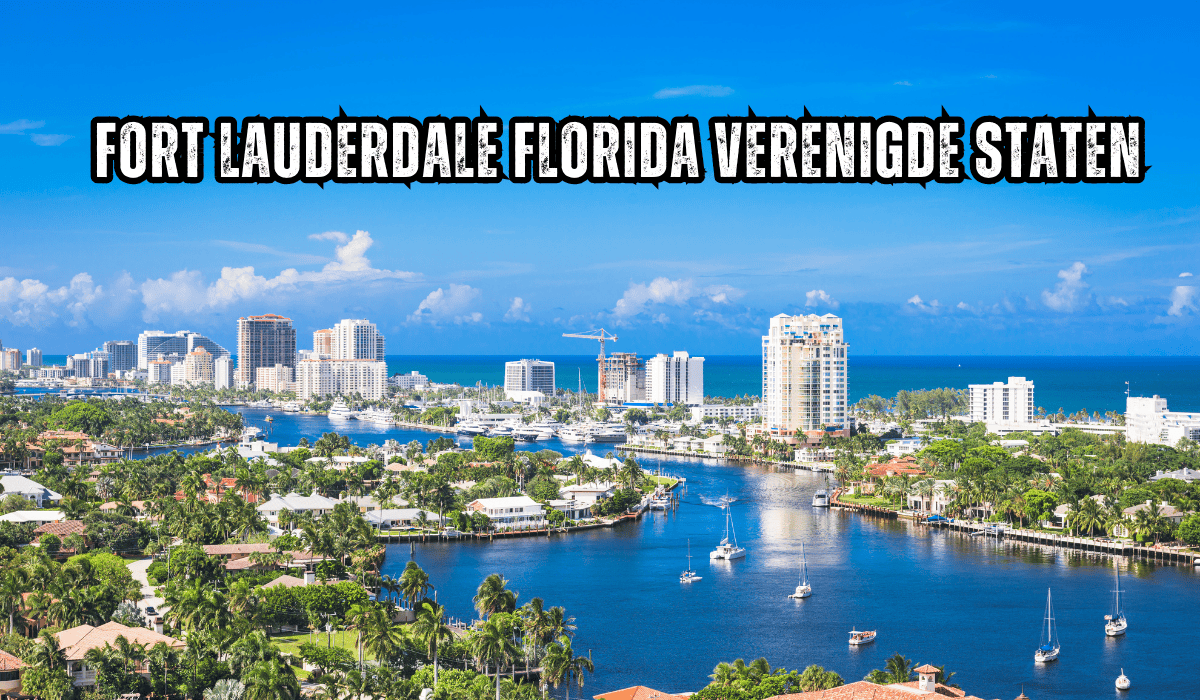Fort Lauderdale, Florida, Verenigde Staten, is a coastal city that offers a fascinating blend of history, culture, and daily life, often overshadowed by its more famous neighbor, Miami. This exploration aims to provide a detailed, reflective look at the Fort Lauderdale, Florida, Verenigde Staten, drawing on its past, present, and the interplay between tourism and local identity, particularly for a global audience, including Dutch-speaking readers curious about life in the United States.
Historical Roots and Evolution
The city’s story stretches back thousands of years, beginning with the Tequesta Indians, who inhabited the area for millennia, living off the sea and rivers. Their society was disrupted in the 16th century by Spanish explorers, who introduced diseases like smallpox, leading to a significant decline in the native population. By 1763, most remaining Tequesta were evacuated to Cuba when Spain ceded Florida to Britain, leaving the land largely undeveloped.
The modern history of Fort Lauderdale began in 1838 during the Second Seminole War, when Major William Lauderdale led a detachment to build forts along the New River, naming the area after him. These forts, including one at the site of today’s Bahia Mar Marina, were abandoned by 1842, and the region remained a wilderness for decades. Development didn’t take off until the late 19th century, spurred by the Florida East Coast Railroad’s expansion in the 1890s. The city was incorporated in 1911 and became the county seat of Broward County in 1915.
The 1920s saw a land boom, with canals dug to create residential areas, earning Fort Lauderdale the nickname “Venice of America.” However, the 1926 Miami Hurricane and the Great Depression slowed progress. World War II marked a turning point, with Fort Lauderdale becoming a major naval base, training pilots and hosting radar schools. After the war, returning service members fueled a population explosion, setting the stage for the city’s modern identity.
Lesser-known historical facts add depth to this narrative. For instance, Fort Lauderdale had a thriving pineapple industry in the late 19th and early 20th centuries, and during Prohibition, its waterways were hotspots for rum-running, with smugglers using the canals to evade authorities.
Cultural Vibrancy and Artistic Expression
Today, Fort Lauderdale is a cultural hub, with the Riverwalk Arts District serving as its creative heart. The Broward Center for the Performing Arts hosts Broadway shows, concerts, and dance performances, while the Museum of Discovery and Science offers interactive exhibits for all ages. The NSU Art Museum Fort Lauderdale showcases contemporary art, reflecting the city’s diverse influences. History Fort Lauderdale, established in 1962, preserves the city’s past through exhibitions like “Paradise Under Palmettos,” featuring local artists, and offers daily guided tours at the New River Inn Museum of History.
Cultural events further enrich the scene, such as the annual Fort Lauderdale International Film Festival and the Seminole Hard Rock Winterfest Boat Parade, which celebrate the city’s artistic and maritime heritage. Partnerships with organizations like Florida Arts & Culture and the Broward County Cultural Division highlight its commitment to the arts.
Local Life: A Diverse Tapestry
Fort Lauderdale’s population, part of Broward County’s 1.8 million residents across 31 cities, is a melting pot of cultures. Neighborhoods like Sistrunk reflect the African American community’s rich history, with thriving businesses and a legacy of resilience. Las Olas Boulevard, meanwhile, is the city’s glamorous center, lined with upscale shops, galleries, and restaurants, attracting both locals and visitors.
Water is central to daily life, with over 165 miles of navigable waterways. Many residents own boats, using them for commuting, recreation, or enjoying sunset cruises. This integration of land and water is evident in neighborhoods like Riverside, with its historic homes, and Coral Ridge, a family-friendly area. The city’s semi-tropical climate, with over 3,000 hours of sunshine annually, enhances this lifestyle, offering year-round ocean breezes and a relaxed pace.
Community involvement is encouraged, with initiatives like the Vision Plan 2035 aiming to make Fort Lauderdale “The City You Never Want to Leave.” Events like the “Take PRIDE! 2025” exhibition honor the LGBTQ+ community, and educational programs at History Fort Lauderdale engage residents, fostering a sense of belonging.
Balancing Tourism and Local Needs
Fort Lauderdale’s identity has evolved from a spring break hotspot in the 1960s and 1970s to a family-friendly city catering to retirees and professionals. This shift reflects efforts to balance tourism with maintaining a livable city. The city promotes ecotourism and cultural tourism, benefiting both visitors and residents. Preserving green spaces and historic areas, such as the Old Fort Lauderdale Village, ensures the city remains attractive to locals while welcoming tourists.
Challenges remain, as the influx of visitors can strain resources, but initiatives like Museums for All, offering free admission to SNAP EBT cardholders, demonstrate a commitment to inclusivity. The city’s focus on historic preservation and community engagement, seen in guided tours and educational programs, helps maintain a harmonious balance.
Reflections and Comparisons
For readers from the Verenigde Staten, particularly Dutch-speaking audiences, Fort Lauderdale offers a contrast to more urban centers like Miami. It’s a place where history and modernity coexist, where the past—evident in the Tequesta legacy and early forts—is honored alongside a forward-looking arts scene. The city’s waterways, reminiscent of Amsterdam’s canals, provide a unique perspective on American life, blending natural beauty with urban development.
Conclusion
Fort Lauderdale is more than a beach destination; it’s a city with a rich history, a vibrant culture, and a diverse community. Whether exploring its museums, cruising its canals, or simply soaking in the sun, it offers a glimpse into a place where the past and present flow together, much like the New River that runs through its heart.
